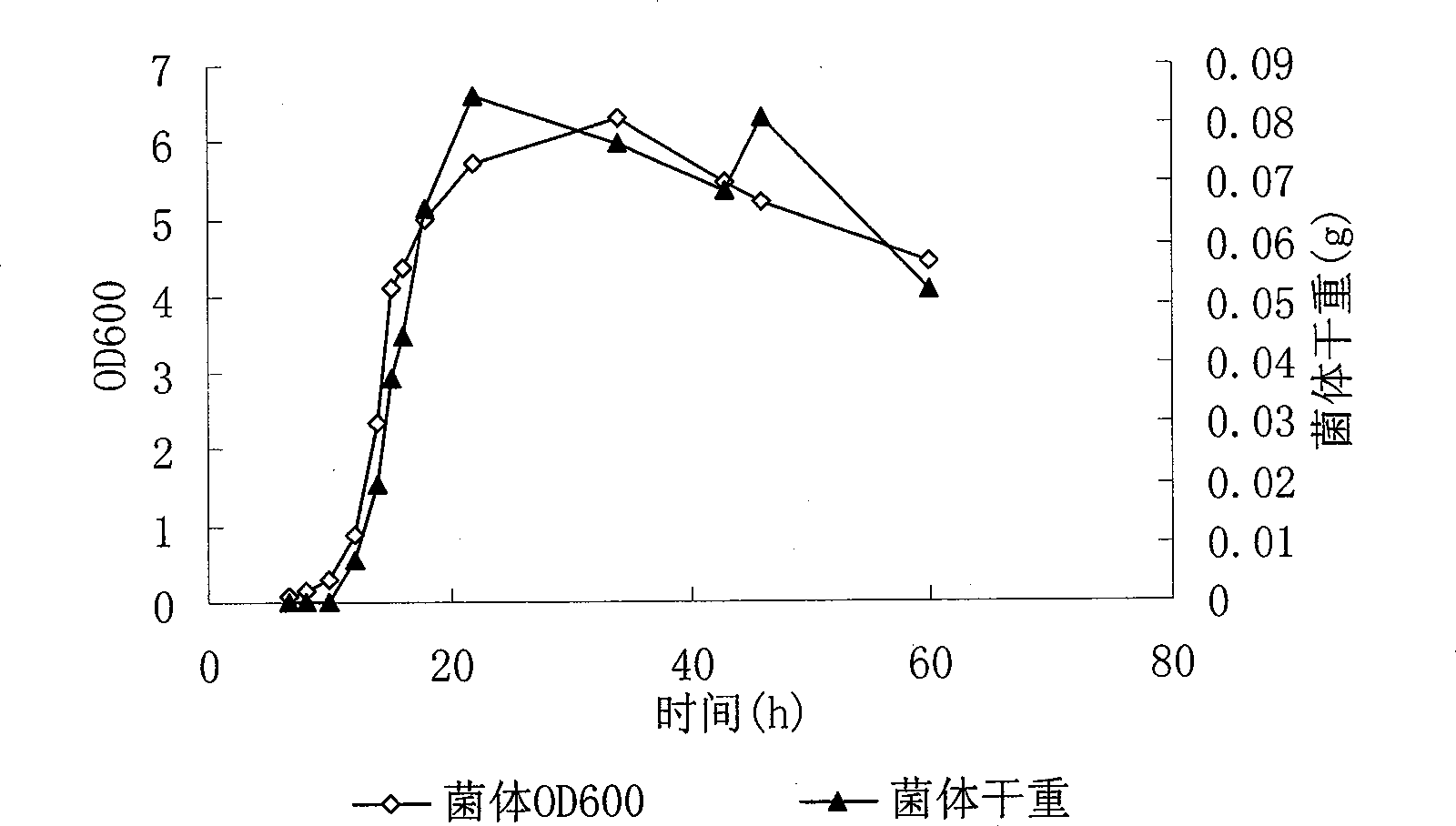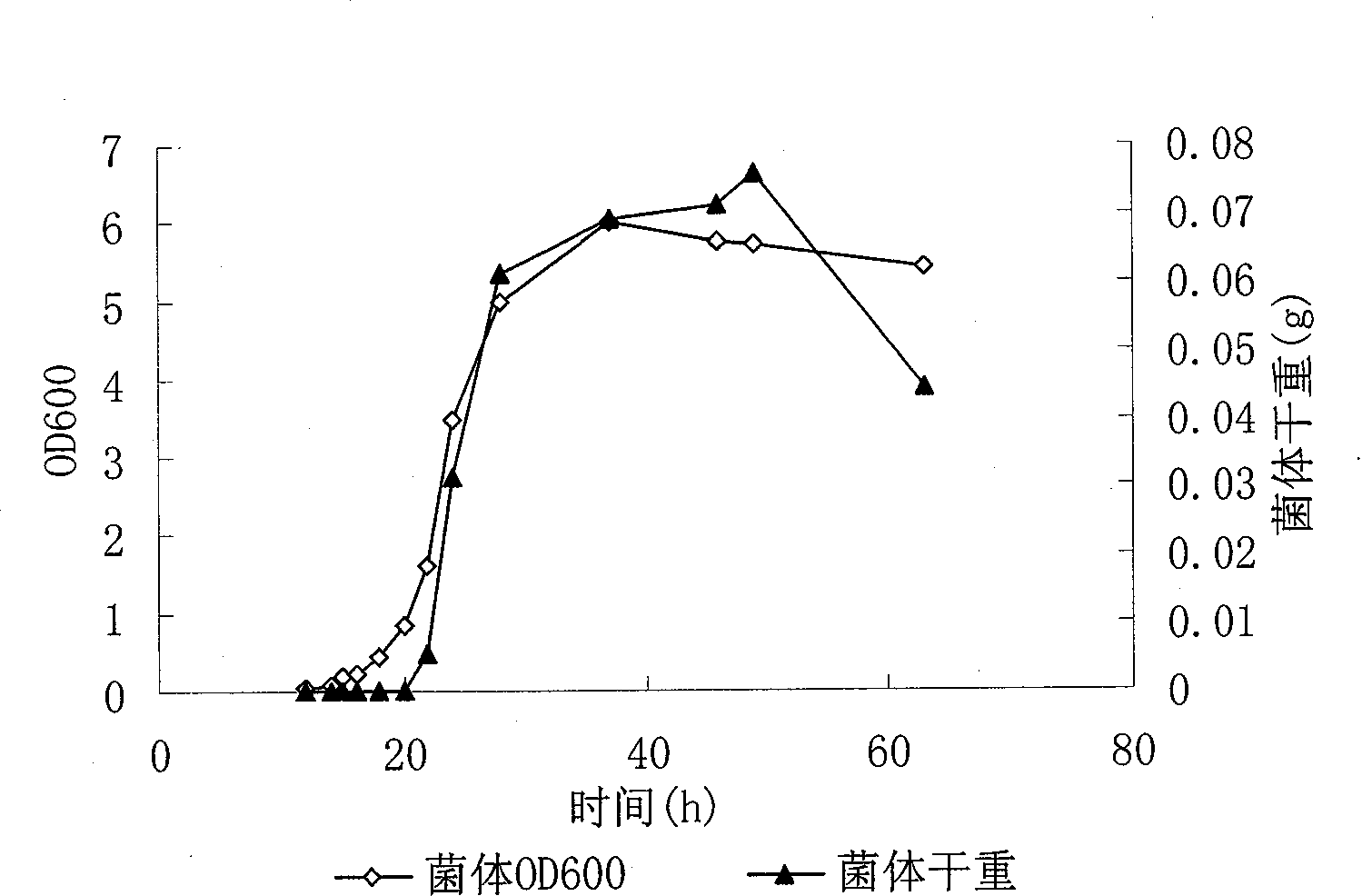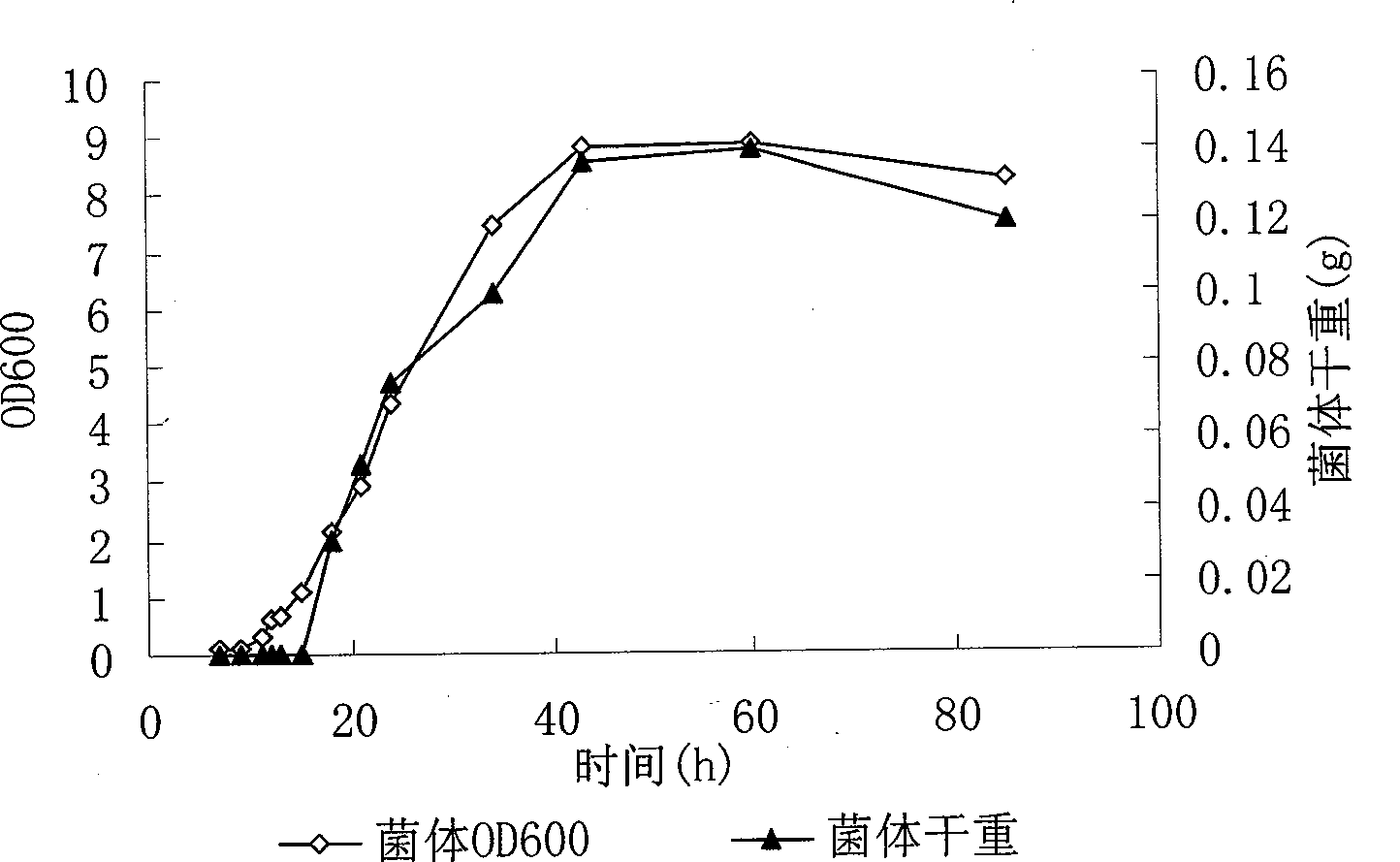Pyridine degradable bacteria, complex bacterial agent thereof, preparation and use
A compound bacterial agent, the technology of Rhodococcus pyridine, which is applied in the field of pyridine-degrading microorganisms and their compound bacterial agents, can solve the problem of difficult to find microorganisms, and achieve the effects of easy enrichment, simple preparation method and low cost
- Summary
- Abstract
- Description
- Claims
- Application Information
AI Technical Summary
Problems solved by technology
Method used
Image
Examples
Embodiment 1
[0053]Example 1. Isolation, purification and identification of Rhodococcus pyridinovora KT-J002 CGMCC No.2789 and Cellulomonas sp KT-J007 CGMCC No.2788
[0054] Rhodococcus pyridinovora (Rhodococcus pyridinovora) KT-J002 was isolated from the soil soaked in sewage for a long time in Hubei Sanonda Pesticide Factory. The specific process of enrichment, separation and purification is as follows:
[0055] The collected sample was inoculated into 1780 modified selective medium containing mixed substrates such as pyridine, quinoline, phenol and cyanide (the concentration of each substrate was respectively pyridine 1000 mg / L, quinoline 100 mg / L, phenol 200 mg / L , cyanide 100mg / L), 30°C, shake culture at 180rpm for one week, then inoculate 10% of the inoculum into fresh enrichment medium and continue to shake. Inoculate into fresh enrichment medium and continue to shake until the culture medium becomes turbid again, then dilute and spread the enrichment solution onto the solid 1780 s...
Embodiment 2
[0057] The degradation spectrum of 5 strains of bacteria of embodiment 2, composite bacterial agent to pollutant
[0058] 1780 modified medium is used as the basic medium (when benzene, phenol, toluene, xylene are added, 1.0g / L NH 4 NO 3 As a nitrogen source), the organic pollutants shown in Table 1 were used as the only added energy source, carbon source or nitrogen source, and were cultured in a solid state at 30°C for one week to observe the formation of colonies. The test results of benzene, phenol, toluene, xylene, pyridine, cyanide, quinoline, imidazole and other compounds are shown in Table 1. The results showed that the degradation spectrum of the 5 strains was relatively broad, and they could grow by using various organic pollutants, especially for pyridine, which had high degradation activity.
[0059] Table 1 Degradation and utilization of organic pollutants by 5 strains
[0060]
[0061] Note: "+" in the table means that the bacteria grow on the corresponding...
Embodiment 3
[0062] The characteristics of embodiment 3, 5 bacterial strains degrading single pyridine matrix separately
[0063] 1) Determination of growth curves of 5 strains in enriched medium
[0064] In order to determine the optimal age and inoculation amount of bacteria used in the enrichment medium in the degradation experiment, we plotted the growth curves of five strains in LB containing 1000 mg / L pyridine in the enrichment medium. The growth conditions are as follows: pick a ring of bacteria from the slope and connect it to a 300ml Erlenmeyer flask with 40ml of medium, 30°C, 200rpm shaking culture, take samples at regular intervals, measure the OD600 and dry weight of the bacteria, and the results are as follows: Figures 1a-1e . It can be seen from the figure that Paracoccus denitrificans (Paracoccus denitrificans) W12CGMCC No.1673 enters the logarithmic phase at about 10h, reaches the middle and late logarithmic phase at 22h, and enters the stable phase at 34h, so 22h is sele...
PUM
 Login to View More
Login to View More Abstract
Description
Claims
Application Information
 Login to View More
Login to View More - R&D
- Intellectual Property
- Life Sciences
- Materials
- Tech Scout
- Unparalleled Data Quality
- Higher Quality Content
- 60% Fewer Hallucinations
Browse by: Latest US Patents, China's latest patents, Technical Efficacy Thesaurus, Application Domain, Technology Topic, Popular Technical Reports.
© 2025 PatSnap. All rights reserved.Legal|Privacy policy|Modern Slavery Act Transparency Statement|Sitemap|About US| Contact US: help@patsnap.com



